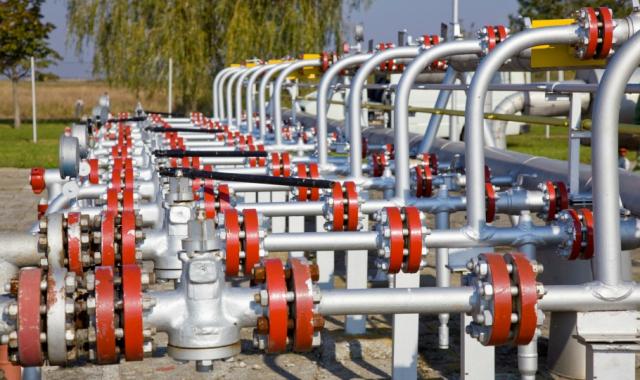
Recent news headlines about gas storage incidents highlight the fact that it is not only oil and gas producing wells that need continuous real-time integrity monitoring to avoid catastrophic leaks.
According to the International Energy Agency’s (IEA) most recent forecasts, we can expect a sustained period of growth in natural gas consumption over the next few years. The IEA predicts that by 2040, gas will be second only to oil as the largest source of energy worldwide, knocking coal into third place. At that point, gas will account for 24% of the global energy mix.
If we look at the European Union’s energy mix, we can see an even more dramatic increase in gas consumption. Although energy demand in the European bloc has remained relatively stable, over the past two decades there has been a radical shift in the balance of energy sources, with a 41% increase in demand for gas, compensating for a 41% reduction in the use of coal as an energy source. As pressure mounts to embrace the use of “clean” fuels in energy production, this growth can be expected to continue.
But Europe also illustrates a key challenge in providing for this increased gas consumption: matching demand with supply. The countries with the largest reserves of natural gas—Norway, the Netherlands and the UK—have all peaked in production levels and are now recovering less gas every year.
Over the past 10 years, swing ratios have averaged 47% in France, 36% in Denmark and Germany, and 34% in the Netherlands and the UK. And while meeting swing supply was previously accomplished through flexibility of indigenous gas production, decreased production volumes mean that an alternative source has to be found.
All this points to a greater demand for storage facilities to maintain a reliable energy supply throughout the year and mitigate against supply—and price—volatility for the end-consumer in Europe and beyond.
For all of these reasons, underground storage that takes advantage of existing but depleted reservoirs, salt caves or aquifers makes a great deal of commercial sense for any company involved in the production and transmission of natural gas. Particularly in the case of depleted reservoirs, much of the infrastructure is already in place, so the wells that were installed to create a production facility can potentially be reused to support the storage activities.
Operators of underground gas storage (UGS) wells have to be confident that they have complete control over their integrity. The well tubing, well casing, casing cement bond, sealing elements in the wells, packers, wellhead seals and valves all present opportunities for leakage. Without control of each and every one of these components, the whole well loses integrity.
Should a breach occur, with risk of a leak or major blow out, the storage facility not only poses significant risks to health, safety and the environment, it is quite literally leaking profits. Well integrity management provides further operational cost-reduction by optimizing the scheduling of well activities like maintenance and inspections as well as real-time risk assessment for activity prioritization.
Of course, it’s not just day-to-day revenue that’s at stake. The environmental concerns that drive demand for gas in the first place also mean that regulators and other government bodies take a negative view of any leaks and the impact they have on public health, land values and efforts to improve air quality and reduce carbon emissions.
Since the most cost-effective storage facilities are located fairly close to end-consumers, there is an inevitable reputational consequence, plus likely fines and other financial penalties to be paid. The eventual costs of a leak can far exceed a lost month of revenue. In extreme cases, criminal convictions can arise and the entire license to operate may be at risk.
The past decade has seen well integrity management become part of the standard approach to operational control and risk mitigation associated with well operations. It’s increasingly accepted that real-time monitoring and analysis of an infrastructure’s integrity is the key factor in identifying potential well failures.
Only with the combination of real-time data evaluation and in-time warnings of developing problems that advanced well integrity management systems offer, can upcoming breaches of well integrity be identified and mitigated. Operating without these systems in place risks the potentially massive costs and consequences of a well blowout. No operator need take that risk, for any type of oil or gas operation, including those with underground gas storage facilities.
Dr. Liane Smith, based in the U.K., is managing director of Wood Group Intetech Ltd.
Recommended Reading
Novel EOR Process Could Save Shale from a Dry Future
2024-12-17 - Shale Ingenuity’s SuperEOR, which has been field tested with positive results, looks to remedy the problem of production declines.
BYOP (Bring Your Own Power): The Great AI Race for Electrons
2025-01-06 - Data-center developers, scrambling to secure 24/7 power, are calling on U.S. producers to meet demand as natgas offers the quickest way to get more electrons into the taps.
TGS to Reprocess Seismic Data in India’s Krishna-Godavari Basin
2025-01-28 - TGS will reprocess 3D seismic data, including 10,900 sq km of open acreage available in India’s upcoming 10th Open Acreage Licensing Policy (OALP) bid round blocks.
Pair of Large Quakes Rattle Texas Oil Patch, Putting Spotlight on Water Disposal
2025-02-19 - Two large earthquakes that hit the Permian Basin, the top U.S. oilfield, this week have rattled the Texas oil industry and put a fresh spotlight on the water disposal practices that can lead to increases in seismic activity, industry consultants said on Feb. 18.
AI-Shale Synergy: Experts Detail Transformational Ops Improvements
2025-01-17 - An abundance of data enables automation that saves time, cuts waste, speeds decision-making and sweetens the bottom line. Of course, there are challenges.
Comments
Add new comment
This conversation is moderated according to Hart Energy community rules. Please read the rules before joining the discussion. If you’re experiencing any technical problems, please contact our customer care team.




